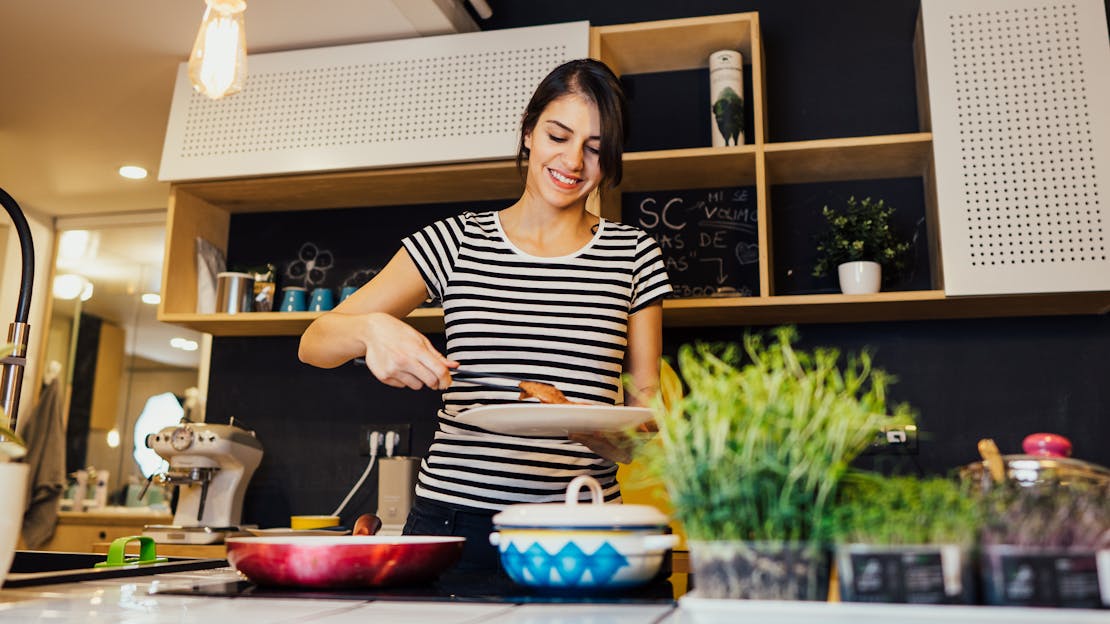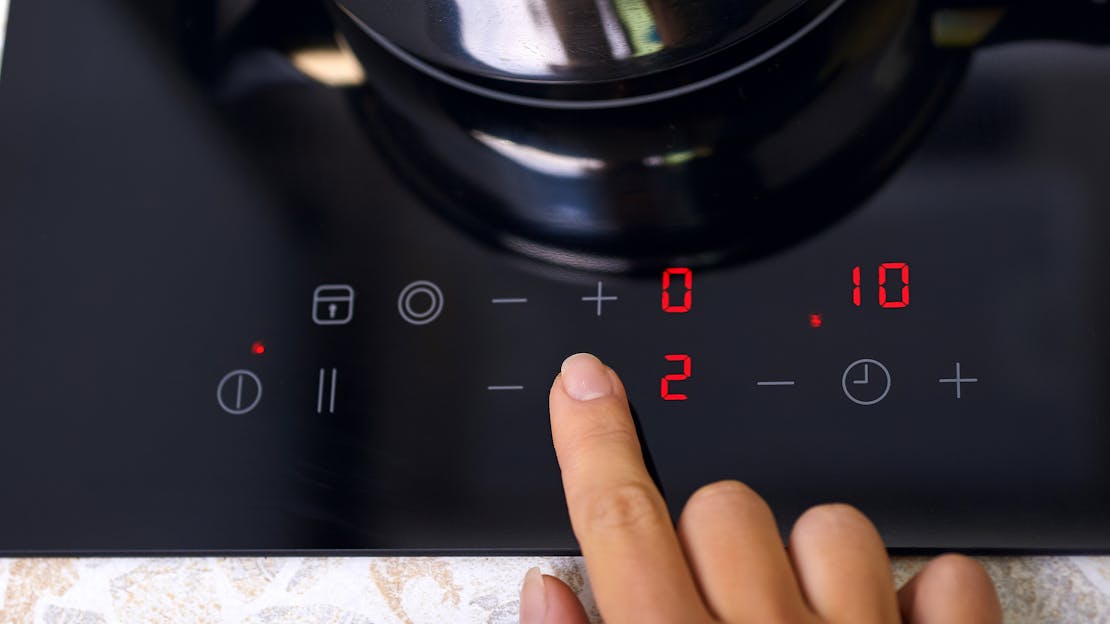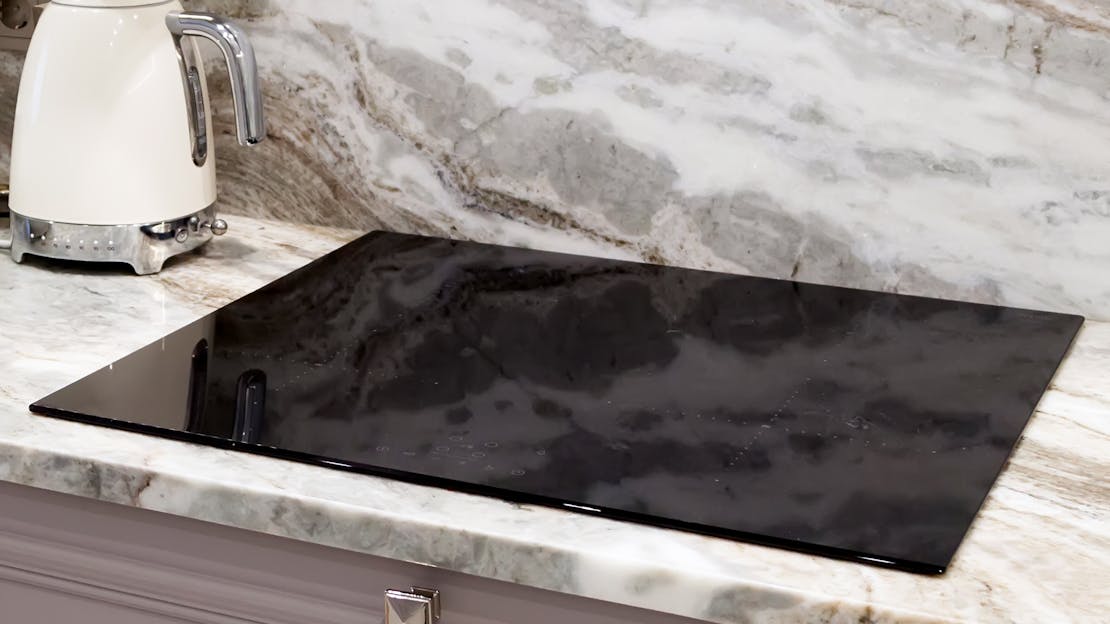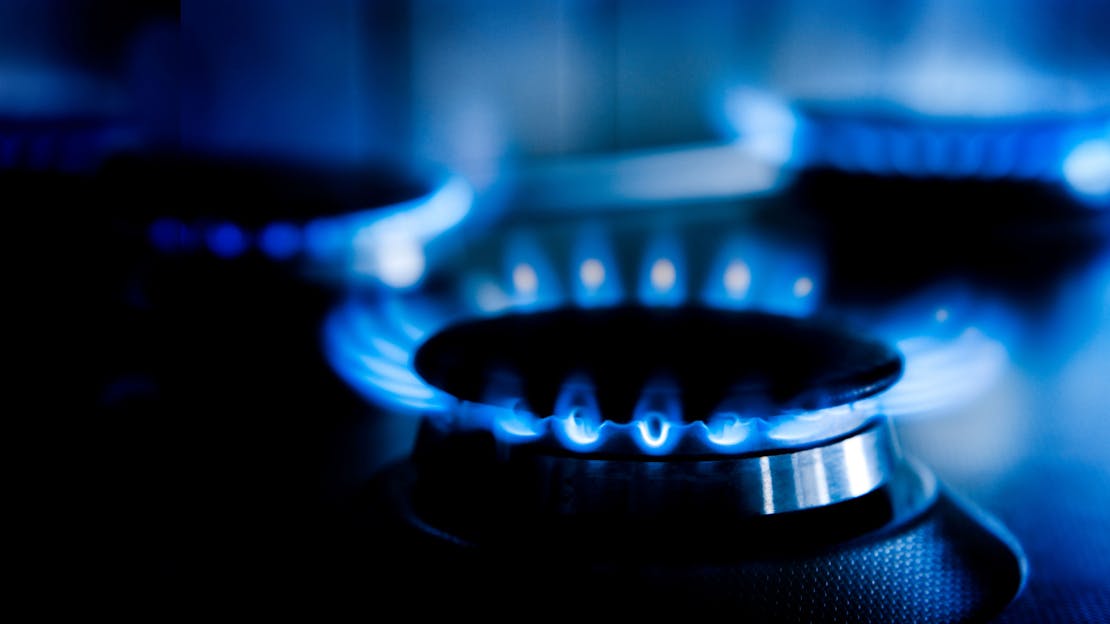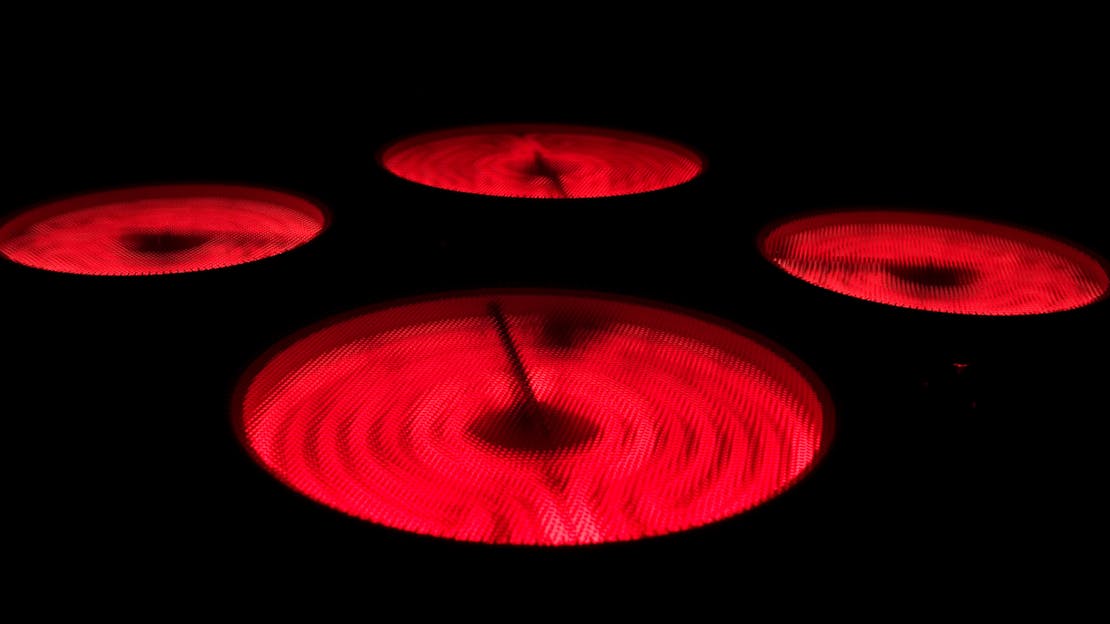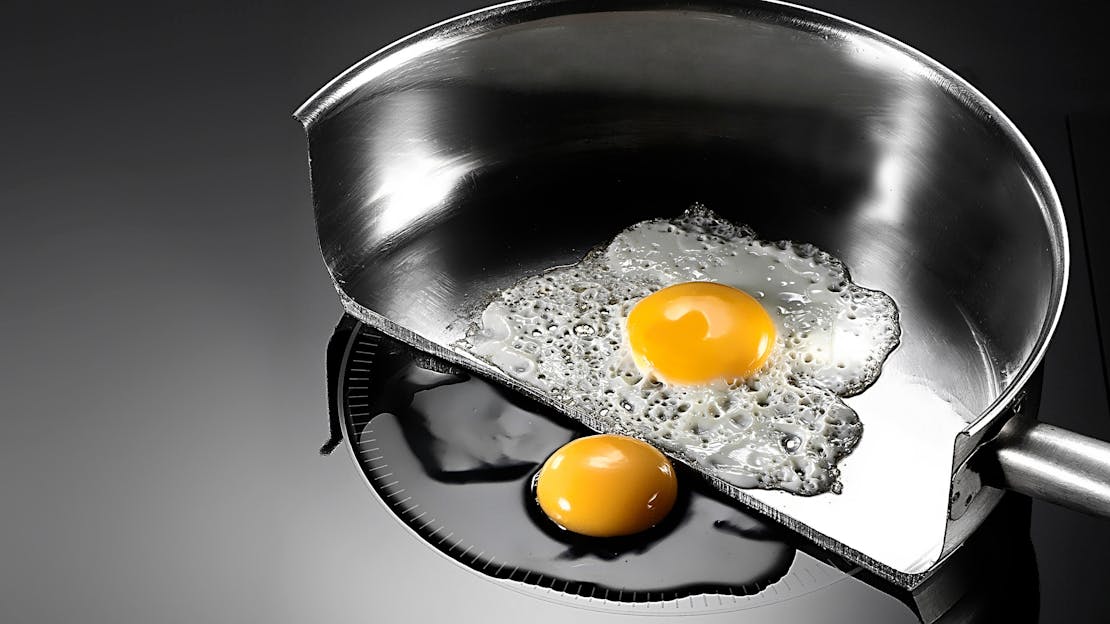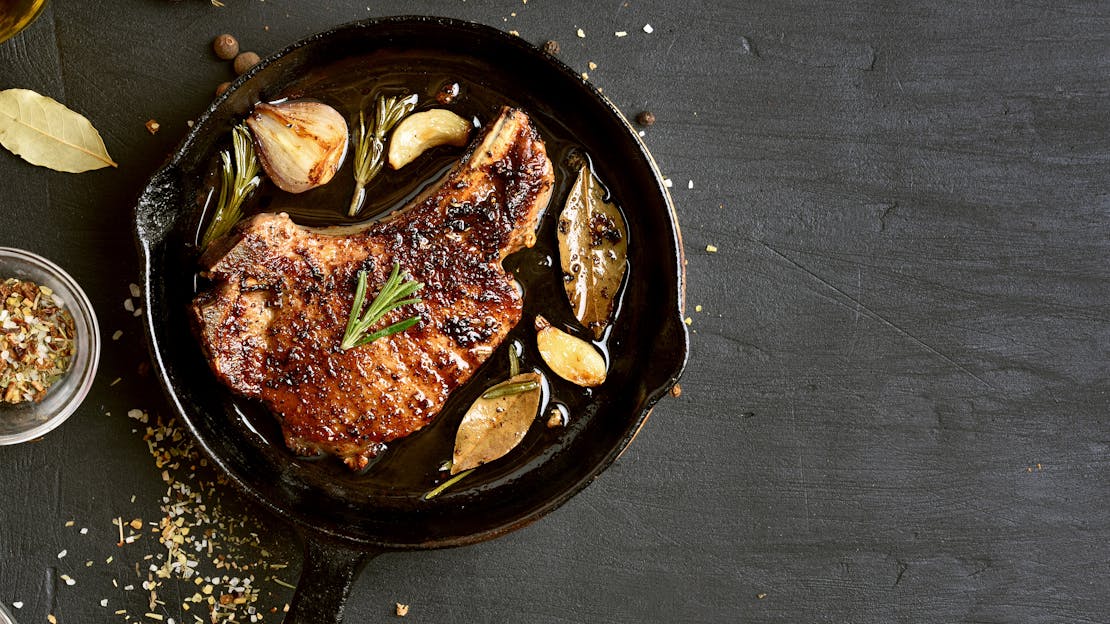
The Ultimate Guide on How To Choose The Best Frying Pan
In the symphony of culinary pursuits, the frying pan stands as a vital instrument, transforming raw ingredients into culinary crescendos. From searing succulent steaks to crafting delicate omelettes, its role is unparalleled. Yet, navigating the labyrinth of materials, sizes, and features when selecting a frying pan can be daunting. This guide serves as your compass, unravelling the nuances of non-stick coatings, stainless steel durability, cast iron traditions, and more. Whether you're a seasoned chef or an aspiring cook, you'll emerge from this guide not only with the perfect frying pan choice but also an understanding of the pivotal role it plays in your culinary escapades. Get ready to elevate your cooking as we explore the heart of the frying pan together.
What is a frying pan?
A frying pan, also commonly referred to as a skillet or fry pan, is a flat-bottomed cooking utensil with slightly sloping sides. It's typically used for frying, searing, sautéing, browning, and other cooking techniques that involve direct exposure to heat. Frying pans come in various sizes and materials, such as stainless steel, cast iron, non-stick coated, and copper, each offering distinct advantages for different cooking needs. They often feature a long handle for easy manoeuvrability and a shorter, sometimes helper handle on the opposite side for added stability when lifting or pouring. Frying pans are a fundamental tool in any kitchen, playing a key role in preparing a wide range of dishes, from breakfast classics like eggs and bacon to dinner favourites like stir-fries and seared meats.
Which Fry Pan is Suitable for You? A Guide to Considering Handles and Weight
When it comes to selecting the perfect frying pan, the devil is in the details. Two crucial aspects that can significantly impact your cooking experience are the type of handles and the weight of the pan. Let's delve into these factors to help you make an informed choice that aligns with your culinary needs.
Handles:
Handles might seem like a minor consideration, but they play a pivotal role in your cooking comfort and safety. Frying pans usually come with one long handle and occasionally a second helper handle on the opposite side. The material and design of these handles can influence how easy the pan is to maneuverer and whether it's oven safe.
Metal Handles: Frying pans with metal handles, often made of stainless steel, are durable and can withstand high heat. They're great for stovetop cooking but can become hot to the touch, so be cautious and use oven mitts when transferring a pan from hob to oven.
Heat-Resistant Handles: Some frying pans come with heat-resistant handles made from materials like silicone or other heat-resistant plastics. These handles stay cooler during cooking, making them a safer choice, but they might not be suitable for oven use at very high temperatures.
Riveted vs. Solid Handles: Handles can be riveted (attached with metal rivets) or solid (part of the pan's body). Riveted handles provide sturdiness and can handle heavier loads, while solid handles offer a sleeker look and easier cleaning.
Weight:
The weight of a frying pan can impact your cooking techniques and overall kitchen experience.
Lightweight Pans: Lighter frying pans are easier to handle and maneuverer, making them suitable for tasks that require frequent flipping and tossing, such as omelettes and delicate fish. However, they might not retain heat as effectively as heavier pans.
Heavyweight Pans: Heavier frying pans, often made of cast iron or certain stainless steels, tend to distribute and retain heat more evenly. This makes them ideal for tasks like searing and achieving a nice crust on meats. However, their weight can make them less convenient for tasks that involve constant movement.
Choosing What's Right for You:
Consider your cooking style, preferences, and physical capabilities when deciding which frying pan handles and weight are suitable for you. If you enjoy versatility and moving quickly in the kitchen, a lighter pan with comfortable handles might be your choice. If you're a fan of hearty sears and oven-to-table dishes, a heavier pan with heat-resistant handles could be your go-to.
In the symphony of flavours you create in your kitchen, the frying pan is your instrument. By understanding the significance of handles and weight, you can fine-tune your culinary performance and orchestrate dishes that resonate with perfection.
Which Fry Pan is Suitable for You? A Guide to Considering Cleaning & Maintenance
As you embark on your culinary adventures, the quest for the ideal frying pan extends beyond cooking performance to encompass cleaning and maintenance. The ease with which a pan can be cleaned and cared for can significantly impact your cooking routine and the lifespan of your investment. In this segment, we'll explore the key aspects of cleaning and maintenance to help you select a frying pan that aligns with your kitchen dynamics.
Cleaning:
Non-Stick Coatings: Frying pans with non-stick coatings are a popular choice for effortless food release and easy cleaning. These pans require minimal oil and prevent food from sticking, which simplifies clean-up. However, avoid using metal utensils, as they can damage the coating over time.
Stainless Steel: Stainless steel frying pans are durable and resistant to staining. While they might require a bit more oil during cooking to prevent sticking, they're generally straightforward to clean. Stubborn stains can often be removed using a gentle scrubbing pad or a mixture of baking soda and water.
Cast Iron: Cast iron frying pans require special care to maintain their seasoning and prevent rust. Cleaning with soap is generally not recommended, as it can strip the seasoning. Instead, use a brush or a gentle scrubbing pad, and dry the pan immediately after washing to prevent rusting.
Maintenance:
Seasoning: If you opt for cast iron or carbon steel pans, seasoning is essential. Seasoning involves applying a thin layer of oil to the pan's surface and baking it to create a protective layer that prevents rust and enhances non-stick properties. Regular seasoning helps maintain the pan's integrity and cooking performance.
Avoiding Thermal Shock: Rapid temperature changes can cause warping or even cracking in some pans. To prevent this, allow your pan to cool down before washing it with cold water, and avoid placing a hot pan directly under cold water.
Proper Storage: Stacking heavy pans on top of each other can lead to scratches and damage. To maintain your frying pan's condition, consider using pan protectors or storing them individually.
Choosing What's Right for You:
Your cooking style and maintenance preferences should guide your choice of a frying pan that matches your commitment to cleaning and care. If convenience is paramount, a non-stick pan might be your ally. If you enjoy the process of seasoning and are willing to invest a bit more effort, a cast iron pan can become your culinary companion.
Which Fry Pan is Suitable for You? A Guide to The Different Types of Pans
In the symphony of the kitchen, where tastes and textures harmonise, the choice of cookware orchestrates the culinary journey. From the graceful glide of a crêpe in a non-stick pan to the robust embrace of a cast-iron skillet, each type of pan contributes its own verse to the culinary sonnet. As we traverse the culinary landscape, we'll explore the sleek efficiency of stainless steel, the rustic charm of a wok's curved embrace, and the smoky allure of grill pans, understanding how each pan becomes an instrument in the hands of the cook, turning ingredients into epicurean artistry.
Non-stick Coated: Non-stick coated pans feature a special layer that prevents food from sticking to the surface, requiring minimal oil for cooking. They're ideal for delicate dishes like eggs and pancakes, allowing easy food release and effortless clean-up.
Ceramic: Ceramic pans boast a non-stick surface created from natural materials. They offer excellent heat distribution, making them suitable for a variety of cooking tasks. Their attractive appearance and eco-friendly nature add to their appeal.
Cast Iron: Cast iron pans are known for their unparalleled heat retention and even distribution. They develop a natural non-stick surface through seasoning, enhancing their versatility for searing, frying, baking, and more.
Carbon Steel: Similar to cast iron, carbon steel pans offer fantastic heat retention and versatility. They're lighter and have a smoother surface, making them ideal for high-heat cooking methods like sautéing and stir-frying.
Stainless Steel: Stainless steel pans are durable and resistant to staining. They're excellent for achieving a great sear on meats and can withstand high temperatures. However, they might require more oil or skill to prevent sticking.
Wok Pans: Wok pans feature a deep, rounded shape and are designed for high-heat cooking, especially stir-frying. Their wide cooking surface and sloped sides make tossing and stirring ingredients effortless.
Grill / Griddle Pans: These pans come with ridged surfaces (grill) or flat surfaces (griddle) that mimic outdoor grilling. They're perfect for achieving grill marks on meats and adding a smoky flavour to your dishes.
Each pan type has its unique characteristics, catering to various cooking preferences and techniques. Understanding these differences can help you select the right pan for your culinary endeavours.
Heat Conductivity
The heat conductivity of pans, also known as thermal conductivity, is an important property that determines how efficiently a pan can distribute and transfer heat from a heat source (such as a hob or burner) to the food being cooked. It plays a significant role in cooking performance and can affect the quality of your culinary creations.
Here are some key points about heat conductivity in pans:
Material Matters: The heat conductivity of a pan largely depends on the material it's made from. Different materials have different thermal conductivity properties. Common materials used for cookware include stainless steel, cast iron, aluminium, copper, and non-stick coatings.
Copper: Copper is one of the best conductors of heat among common cookware materials. It heats up quickly and distributes heat evenly across the cooking surface. However, copper pans are often lined with other materials, like stainless steel, due to reactivity issues with certain foods.
Aluminium: Aluminium is another excellent heat conductor. It's lightweight and heats up quickly, making it a popular choice for many cookware products. However, pure aluminium pans can react with acidic ingredients, so they are often coated or anodised to prevent this reaction.
Stainless Steel: Stainless steel is not as efficient a heat conductor as copper or aluminium, but it is valued for its durability, non-reactivity with food, and resistance to corrosion. Some stainless steel pans have an aluminium or copper core to improve heat distribution.
Cast Iron: Cast iron pans have good heat retention but are not the best conductors. They heat up slowly but retain heat well, making them great for slow-cooking and searing. Properly seasoned cast iron pans can become almost non-stick over time.
Non-Stick Coatings: Non-stick pans are typically made from materials like Teflon (PTFE) or ceramic. While these coatings make it easy to cook without sticking, they do not conduct heat as efficiently as metals. Therefore, non-stick pans often have an aluminium core for better heat distribution.
Multi-Ply Construction: Some high-end pans feature multi-ply construction, where multiple layers of different materials are bonded together. For example, a stainless steel pan might have an aluminium or copper core sandwiched between layers of stainless steel. This construction combines the benefits of different materials for improved heat conductivity and durability.
In summary, the heat conductivity of pans depends on the material from which they are made. Copper and aluminium are excellent conductors, while stainless steel and cast iron have their own advantages in terms of durability and other properties. The choice of pan material should be based on your cooking style, preferences, and the types of dishes you like to prepare. Ultimately, understanding heat conductivity can help you select the right pan for your cooking needs and achieve better culinary results.
Cooking Style
Selecting the appropriate frying pan for your cooking style is crucial to achieve the best results. Here's a breakdown of which frying pan is suited to various cooking styles:
| Cooking Style | Recommended Frying Pan | Notes |
|---|---|---|
| Searing and High-Heat Cooking | Cast Iron Frying Pan | Retains and evenly distributes heat. |
| General Cooking, Sautéing, and Stir-Frying | Stainless Steel Frying Pan | Versatile and durable; suitable for sautéing and creating pan sauces. |
| Low-Fat and Non-Stick Cooking | Non-Stick Frying Pan | Non-stick coating for minimal oil/fat cooking; ideal for eggs, pancakes, and delicate fish. |
| High-Heat and Authentic Stir-Frying | Carbon Steel Wok | Handles high heat for stir-frying; great for authentic wok dishes. |
| Indoor Grilling and Grill Marks | Grill Pan | Ridge design for indoor grilling; perfect for vegetables and grill-like marks on meats. |
| Specialty Dishes | Specialty Frying Pans (e.g., Crepe Pan, Paella Pan) | Designed for specific dishes; e.g., crepe pan for delicate crepes, paella pan for one-pan dishes. |
| Versatile Cooking | Multipurpose Frying Pans (with removable handles or oven-safe) | Flexible for various cooking styles, including stovetop and oven cooking. |
Remember to consider the size of the frying pan, the material, and your specific cooking needs when choosing the right pan for your style. Proper care and maintenance, such as seasoning cast iron or preserving non-stick coatings, are also important for the longevity and performance of your frying pans.
Budget for Frying Pans
The budget for frying pans can vary widely depending on the material, brand, and size. Here's a rough range of costs for frying pans:
Economy Range: Frying pans in this category are usually made of basic materials like aluminium or non-stick coated steel and can cost as low as £8 to £25.
Mid-Range: These frying pans are often made of higher-quality materials like stainless steel or ceramic non-stick coatings, and they typically range from £25 to £80.
Premium Range: Premium frying pans are made of top-notch materials like cast iron or copper, and they can cost anywhere from £80 to £240 or more.
Designer or Specialty Range: If you're looking for designer brands or specialty pans (e.g., specific types for crepes, woks, or induction cooktops), prices can go well beyond £240, into the £400 or even £800 range.
Keep in mind that investing in higher-quality frying pans can often result in better cooking performance, durability, and longevity, so it's essential to balance your budget with your cooking needs and preferences.
In conclusion
Selecting the best frying pan is an essential decision for any home cook, and we hope this ultimate guide has provided you with the knowledge and insights necessary to make an informed choice. By considering factors such as material, size, coating, and handle type, you can tailor your frying pan to suit your cooking style and needs. Remember that investing in a high-quality frying pan can elevate your culinary experiences, offering you precision, durability, and versatility in the kitchen. Whether you opt for a classic cast iron skillet, a non-stick pan for convenience, or a stainless steel workhorse, your chosen frying pan will undoubtedly become an indispensable tool on your culinary journey. Happy cooking!
Are you interested in purchasing a new appliance? Check out our range of ovens and hobs which work perfectly with a range of different pan types!
Top Selling Hobs from MyAppliances
Discover the epitome of cooking versatility with our leading range of hobs, featuring induction, gas, and ceramic options. Engineered to meet the demands of modern kitchens, our best sellers combine innovative technology with sleek design to deliver exceptional performance every time. Explore our top picks today and revolutionise your cooking space.
Buying Guides - Helping you choose the right hob
Buying Guides - Helping you choose the right hob
With numerous options in fuel types, sizes, and settings, finding the perfect fit for your kitchen can be daunting. Our comprehensive guide simplifies the process, presenting you with a range of excellent choices to make your decision easier.
![The Ultimate Hob Buying Guide]()
Deciding which hob to buy can be challenging, given the range of options available. This guide aims to simplify the process by detailing the various aspects of induction, ceramic, and gas hobs.
![The Ultimate Guide to Induction Hobs]()
If you're considering upgrading your kitchen hob, you may find yourself mulling over the fascinating world of induction hobs. As one of the leading manufacturers of all types of hobs, we're here to help navigate you through this often bewildering terrain. Welcome to the Ultimate Induction Hob Buying Guide!
![The Ultimate Guide to Gas Hobs]()
If you're considering purchasing a gas hob for your kitchen, this guide will provide you with all the essential information you need to make an informed decision. Throughout this guide, we'll explore the advantages, safety considerations, installation process, cleaning tips, and cost considerations associated with gas hobs.
![The Ultimate Guide to Ceramic Hobs]()
Ceramic hobs have revolutionised cooking, offering a sleek and modern aesthetic combined with practical and efficient functionality. So what exactly is a ceramic hob?
![Gas Hob Buying Guide]()
Offering a traditional way to cook food on a hob, our gas hobs here at MyAppliances are simple to use and will instantly update your kitchen.
![Ceramic Hob Buying Guide]()
Extremely easy to use, our ceramic hobs are a dream to clean, too. With handy touch control features, these appliances offer value for money and a fuss-free way to cook.
![Induction Hob Buying Guide]()
Economical and well-designed, our induction hobs here at MyAppliances come in a range of sizes and are easy to install, too.
![The Ultimate Guide to Which Pans Suit Which Hob Types]()
This guide navigates through a spectrum of hob types — from the venerable gas hob to the cutting-edge induction cooker — each demanding a specific pan companionship.

